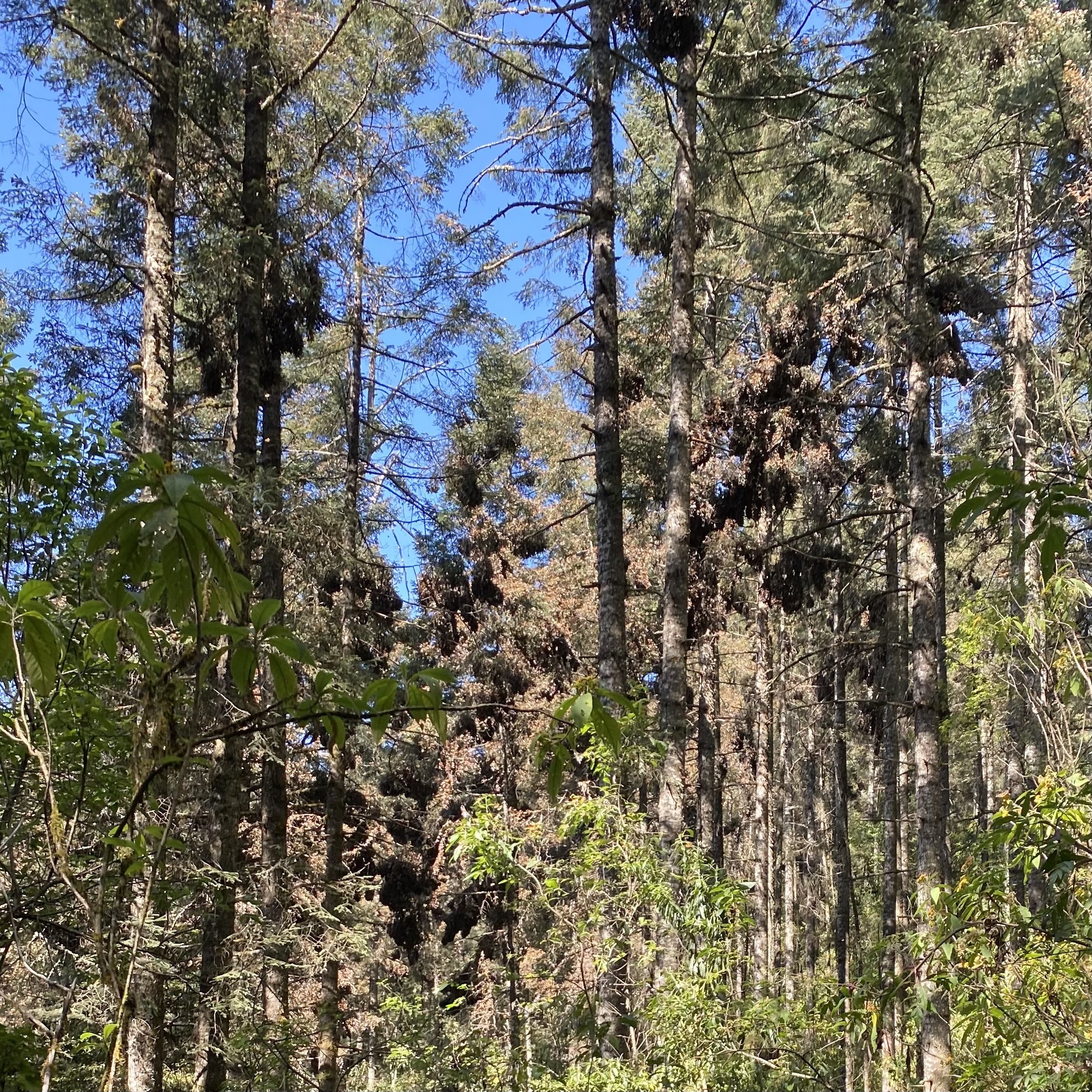The Monarch Life Cycle
Monarch butterflies undergo a complete metamorphosis. There are four stages to this process:
egg, larva or caterpillar, pupa, and adult. It takes about thirty days for a monarch to develop from
egg to adult. A female monarch will lay a single egg at a time, but can lay hundreds of eggs in
one day. She lays her eggs on the underside of a milkweed plant leaf, because milkweed is the only
thing that caterpillars will eat. When the caterpillar emerges, it eats constantly, first the eggshell,
then the plant. It eats so much that it grows to more than 2,000 times its mass. As noted by Anurag Agrawal Monarchs and Milkweed, if an 8-pound baby were to grow at this rate, at the end of one year it would weigh as much as 35 adult elephants!
After about two weeks, the caterpillar will crawl away from the milkweed, find a
secure location, form a silk mat, hang upside down from the mat, and transform into a chrysalis (a protective layer enclosing the pupa). Inside the chrysalis, they disintegrate all their tissues (except for so-called imaginal discs). The imaginal discs fuel rapid cell division to form the features of an adult butterfly. This radical transformation takes about a week and half, after which an adult monarch butterfly emerges.
For a great podcast on how a butterfly emerges from the chrysalis goo, listen to this Radiolab episode.
Adult monarchs do not eat milkweed, but feed instead on nectar from certain flowering plants.
The milkweed it ate as a caterpillar, however, provides it protection. Milkweed is poisonous to many creatures, and after the caterpillars eat it, they—and the adult butterflies—retain the toxins, which would sicken would-be predators. The bright orange of the monarchs wings acts as a warning to predators to stay away!
The Great Migration
Several generations of monarchs will live, lay eggs, and die over the course of the summer. In mid-August, though, an incredibly special, super-generation is born. This generation is 30% larger and lives 8 times longer than the previous generations. They do not mate in the summer, but with incredible stamina, start migrating south to their wintering sites. The eastern monarchs migrate to oyamel fir trees in the mountains of central Mexico. The western monarchs migrate to the California coast. Weighing less than a gram, each butterfly in this generation of eastern monarchs will fly up to 3,000 miles.
In a remarkable feat, this super-generation, which has never been to their wintering site, finds their way back to the same location as their great-grandparents. Biologists have long been puzzled by monarchs’ extraordinary navigational skills, but have made some advances in cracking this mystery. Monarchs navigate using a solar compass in their antennae which allows them to orient south based on where the sun is in the sky. But when it is cloudy and the sun is blocked, they quite amazingly use the earth’s magnetic field for navigation. How the monarchs get to their specific same wintering site each year, though, still remains a bit of a mystery.
When they arrive at their wintering site, monarchs clump together on branches to rest safely through the winter. They cannot fly when temperatures are below 55 degrees Fahrenheit. When they wake from their hibernation in February and early March, the monarchs begin making their way north again. The eastern monarchs fly north towards Texas, where they mate, look for milkweed to lay eggs on, and then die. Several more generations continue this process through the summer, repopulating their breeding ground.

“Those who have had a dream and have lived to see that dream come true will have some conception of my feelings when I first entered the Mexican forest and there, before my eyes, was the realization of a dream that had haunted me since I was 16.”
— Fred Urquart, scientist who discovered the monarch migration
(His remarkable discovery is told in the documentary Flight of the Butterflies.)



